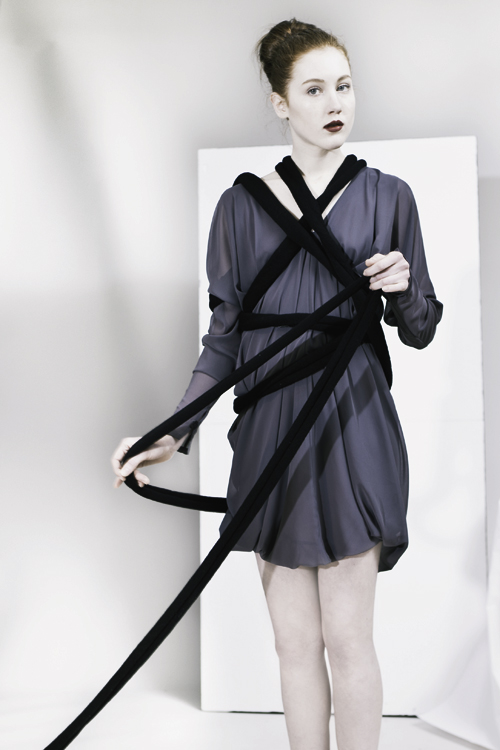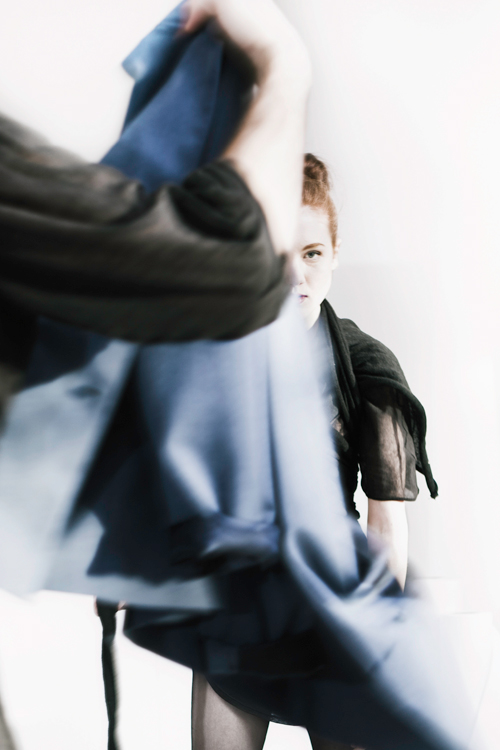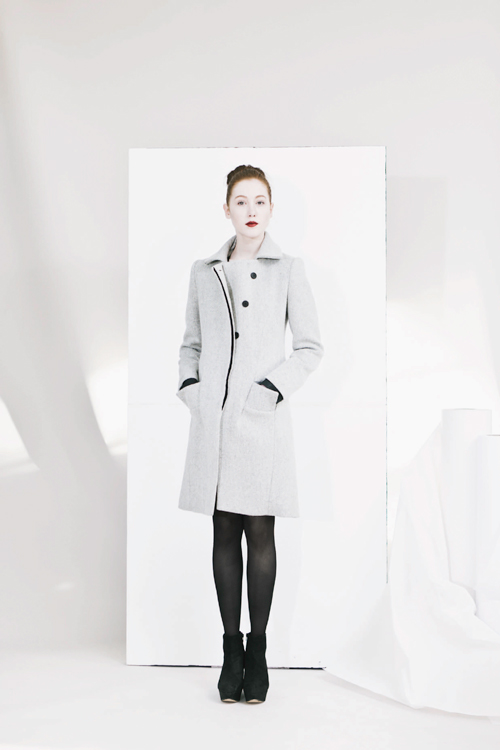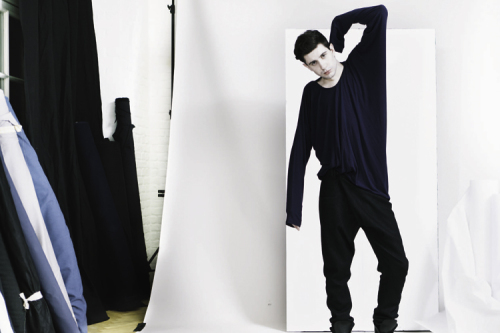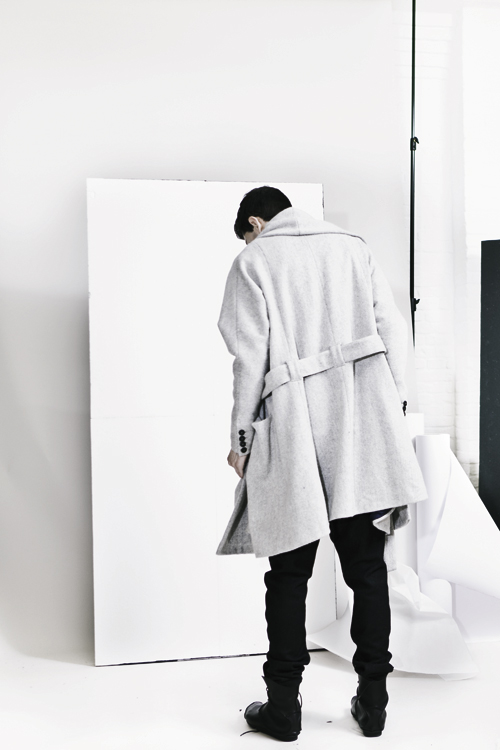With the ‚Federal Competition for Design‘ prize, the Confederate Office for Culture Switzerland values aspiring newcomers in creative fields. Laend Phuengkit is the budding and justified winner of this year’s federal selection. We met him during Berlin fashion week in his nifty one bedroom apartment for Primitivo, olives, crisps, cheese and pickles. Of course, there was Swiss chocolate, too.
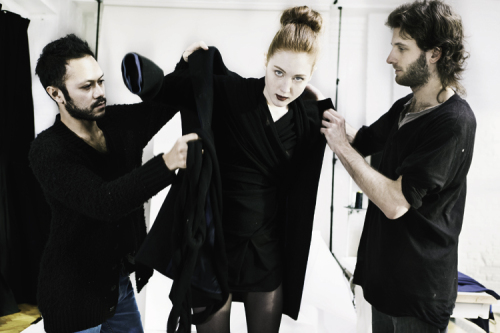
Expressing the synergy of tradition and modernity of Western and Eastern culture, designer Laend Phuengkit and Dominic Knecht teamed up for their Autumn/Winter 2011 collection ‚Knechtphuengkit‘, demonstrating innovative and clean Asian cuts in geometric constructions, wrapping techniques with a hi-end craftsmanship and beautifully flowing fabrics.
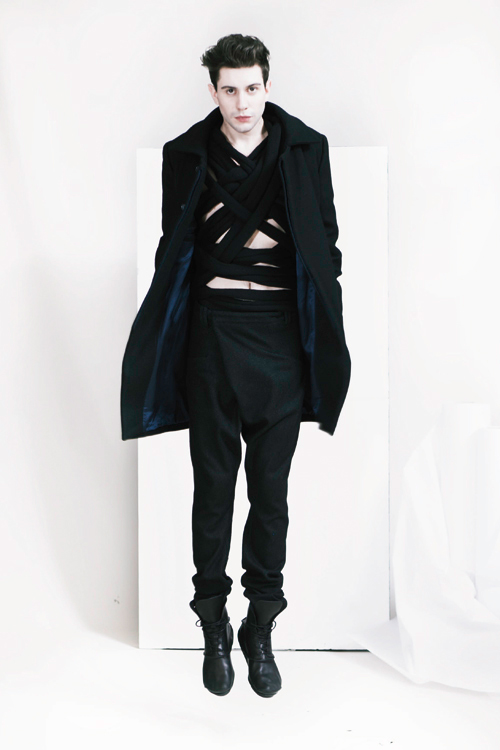
NoéMie Schwaller: Laend, you already stood out with your graduate collection ‚Suwannabhum‘ for Spring / Summer 2009, with which you just won £17’420 worth of financial support. Your designs were bigger, brighter and louder than everything we had seen that night in Basel- how did it come about?
Laend Phuengkit: My concept has always been to interleave the two cultures I have in myself – the Swiss and the Thai. I need both to make headway, they are my inspiration. If it is me, it’s authentic. I like to be authentic. It’s like when you write. You may feel the author through the text, so you should feel the designer through its clothes. One can be oneself and should be true to oneself.
Will you continuously have both cultures united in your collections?
Yes, the hybrid has always been a focus of mine.
Your latest collection is a collaboration with designer Dominic Knecht and your first collaboration ever. How did that work out?
This you can’t ask me as an individual, there is a part of me and a part of Dominic within it. They harmonise, else the atmosphere of the look would not sprout. Dominic works in an artsy way. He experiments a lot with techniques and pattern cutting, questioning the whole. For me, it’s all about a mood, an atmosphere for myself that I need for creation. There are two different operational procedures. That’s why the harmony is complete.
Playful and visual feast meets correct and technical functionality in perfect harmony?
Exactly. Well, not quite. Dominic doesn’t just execute, he sets the limitations of what is feasible.
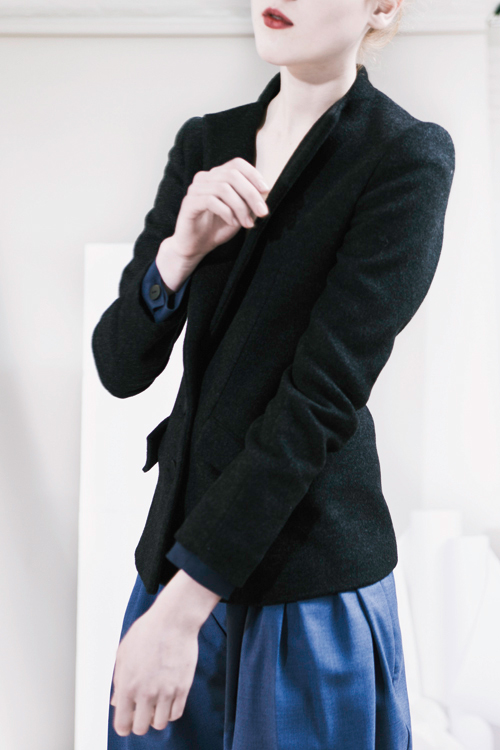
You want to carry on by yourself – will you be lacking Dominic’s boundaries?
No, I have done it all by myself before. Within the process, on the way from A to B, it is easier alone. But I will miss the exchange. But then, I might as well sit down with you and philosophise about fashion. That too would help to suddenly spark an idea. Likewise, reading theoretical books is of great value to me. For example when I am looking for a cut, and slap-bang the switch flips. ‚Fuck, why didn’t I have this idea before?‘ I then ask myself.
What music do you play in your studio?
Right now we are listening to Bon Iver. Ok, we are not in the studio, but sometimes I listen to an album the whole day until late at night, especially if it’s a question of show tracks. Then, I would listen to all different kinds of sounds, from classical to rock music.
What do you eat for breakfast?
I have a black tea without any milk.
Looking around in your flat, you seem to like books. Are they an inspiration to you as well?
Very much so. Last night, I watched the current shows online. Sadly, I couldn’t see any examination with books or any other content at all in that collection. The way Madame Vionnet used to work, or Rei Kawakubo, old paintings that got forgotten in our fast moving, rational time, that’s what designers should study. Or read an interview with Wolfgang Joop; he’s smart and knows exactly what he wants. Fashion is theory, not just an optical occurrence.
It is obvious that there is a concept behind your collections. What do you criticise with your creations?
I criticise high street. H&M and company destroy the whole pricing system and everything is getting copied, even young designers.
So you don’t consent to the democratisation of fashion?
It’s legitimate to a certain point, but not when all high street companies do is copy. They should design and create themselves, foster sustainability of handicraft, and produce in Europe or on the site where their locations are in order to aid the economical development of the particular country. I’m thinking continentally here, totally being aware, that it’s impossible to produce cheaply in a country like Switzerland for example. If only there were more factories, it would be much easier for small and medium-scale enterprises.
What do you think of designers that call themselves artists – do you agree?
That’s a difficult and fragile topic, where it comes down to functionality. If a table can’t stand, it loses his functionality. If a dress is not wearable, it is… an objet d’art. Art is an important factor for me in terms of the design, but I consider myself as a designer, not an artist. At the point where I am to create something, where I am to depict a complicated drapery as a cut, it is an art to do so, but the end result is functional design, not art. Funnily, this piece of art I’ve seen at the ‚Ars Eletronica‘ in Linz crosses my mind. It was about a washing machine that was fed with vegetables and shat faeces smelling like greens. Very functional. …Sorry, that must be the wine.
What about conceptual designers, where do you place them?
Maison Martin Margiela define themselves as artists. This clearly is a marketing strategy. Fashion shows are a centre of attraction and made for marketing purposes. Some do super abstract shows, just to be talked about and feed the media, like Patrick Mohr. I don’t think of his clothes as very outlandish, but the concept behind it comes out even and sells well. It’s provocative on the strengths of its boredom and wearability. Isn’t it just all about causing a stir so as to sell a prêt-à-porter collection? I have seen through them a long time ago (laughs).
It’s the first time you show womenswear as well as menswear. If your collaboration collection was an animal, what would it be?
A leopard, because it is so sleek, moving slowly but very concentrated only to attack its prey. It is mellow yet straightforward.
In your press release you mention a creative living space you need for designing. What kind of habitat is this?
An urban one. Basically, it is the city of Berlin. A city high in contrast that is very antithetic. Our collection is quiet, since in our social life we live all the conflicts and that winds down in our work.
Which is your favourite piece of the collection?
Everything black. Black is dope! But to break it down to one favourite piece I’d opt for look number 24 because of its sophistication and the subtle drapery. It is out of linen and was batik dyed in Italy by Rosenstein that exclusively works with natural fibre, never with synthetics. The collection contains a lot of silk such as chiffon, cotton wool, new wool, linen, viscose and jersey. It feels real good when worn, our clothes change your inner countenance.
Where is your path leading you to?
I am spurred on by my desire to become better, improve my skills and to work alone for a while. Surely, with the money I won, I will be showing in a showroom in Paris, as I do now at the Project Gallery here in Berlin, where I want to keep my base. Paris is too nervous, the hectic life there makes me aggressive and I would get distracted continuously. Berlin is a good city for me at this very moment of my life, it’s great to work in and it’s very inspiring. Besides, production costs are low, as are living expenses.
Have you started working on your next collection yet? What can we look forward to?
I am doing heaps of research on peoples, embellishment and traditions. Right now, I am looking into my grandparents’ life in Bangkok of the 1930s and their evolution of style. The pictures are so up to date at the moment and shape me. Thus, the collection will be an homage to my grandparents. I keep asking myself question to keep my work devising, such as ‚How do I make a fashion statement, how do I want to obtain it?‘ and ‚ How can an homage be defined in a different way and be transferred to my clothes?‘
The Primitivo now empty and the chocolate gone, Laend takes off to one of the many fashion parties taking place in those few days of Berlin fashion craziness – as it is, first and foremost to distribute and exchange business cards. We have our fingers crossed for Laend’s upcoming Paris debut.
Photography: Daniel Matousek
Hair & Make Up: Carina Wittmann
